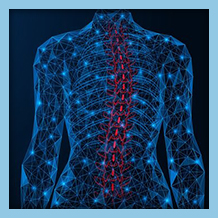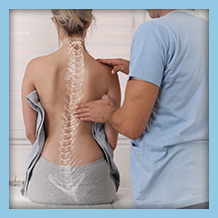

Spine deformities also affect the rest of your body, making even the simplest processes painful or difficult. We at Orthopedic and Laser Spine Surgery are here to help determine if you have a spinal deformity and what treatment options would work best for you.
What Are the Different Types of Spinal Deformities?
There are three types of spinal deformities, all of which involve a curvature of the spine. These three types include the following:
- Scoliosis: A frontal deformity in which the spine curves to the left or right. While the curving typically ends when the skeleton ceases growing, it can still progress into adulthood.
- Kyphosis: The upper back curving forward, which often creates a hump.
- Lordosis: The lower back curving inward instead of the typical outward curvature.
These spinal deformities can be present from birth, an accident or other trauma, or as signs of aging.
What Are the Symptoms of a Spinal Deformity?
Even though all spine deformities deal with a curving of the spine, each one may present different symptoms. Signs of a deformity include the following:
- Back pain: Depending on the spine deformity, you may experience pain in the upper or lower back. If you have scoliosis, you may experience rib pain as well.
- Visible curve/hunched: It can be easy to spot scoliosis just by having someone run their hand along your spine and feeling a curve. You may also have one shoulder or hip higher than the other. If you have kyphosis, you may be hunched over.
- Feeling off balance: Because your spine helps keep you upright, you may have difficulty walking or standing and feel off-balance if you have a deformity.
Sometimes, spinal deformities are minor, so they do not manifest any symptoms. If you are experiencing discomfort or difficulty performing daily tasks, we recommend consulting one of our specialists to find a treatment for you.
What Does Spinal Deformity Treatment Look Like?
Looking into treatment options can be intimidating, but we are committed to finding the best non-surgical or minimally invasive surgical solution for you. It is important to explore all of your options before deciding to have surgery. If the symptoms are non-existent or do not bother you much, it may be best to monitor the deformity and treat it as needed. Physical therapy can also help slow the curving down and realign the spine.
If the spine deformity is a larger issue, surgery may be necessary. If non-surgical treatments do not succeed in adjusting the spine, our expert surgeons would surgically stabilize the joints and vertebrae in your spine to relieve pressure and compression on the nerves with as little trauma as possible.
Contact Our Expert Spine Specialists for Help With Your Spine Deformity
Spinal deformities can be painful and inhibiting. Fortunately, we have several treatment solutions for you to explore to help alleviate your discomfort and get you feeling refreshed and rejuvenated.
At Orthopedic and Laser Spine Surgery, we are ready to work with you to outline your personalized treatment plan. Our surgeons are experts in their field who are dedicated to providing our award-winning medical services. To find out if you have a spinal deformity and get started on finding a solution, please give us at OLSS a call at (855) 853-6542 or fill out our contact form.
